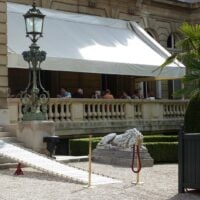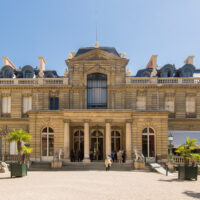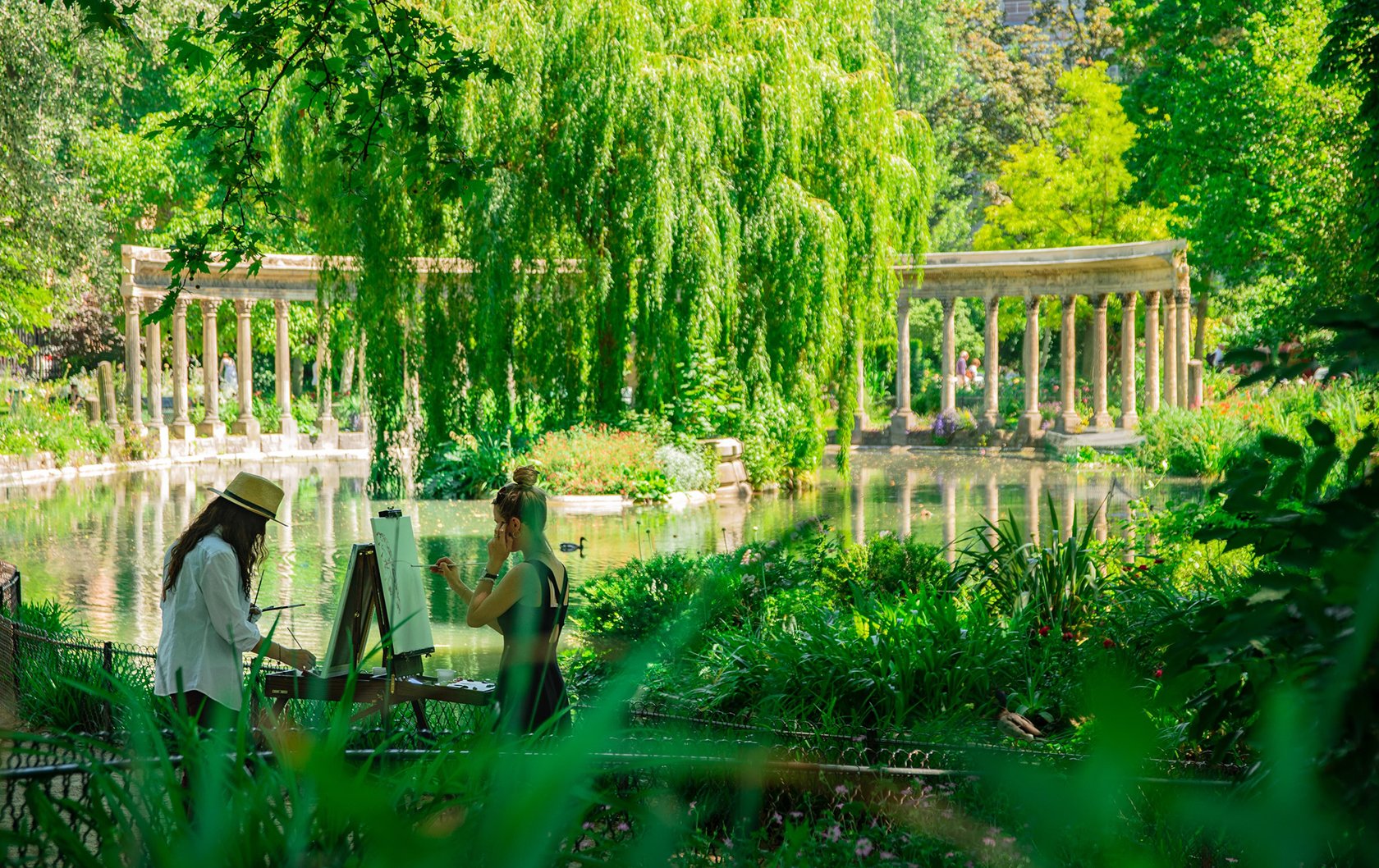
Beautiful moments in Parc Monceau. (Credit)
Paris is home to many fine parks and gardens, which are a must for Paris visitors. A stroll through the Luxembourg Gardens or admiring the Eiffel Tower from the Champ de Mars gardens are unforgettable experiences. Soaking up the sun in one of those classic green chairs in the Tuileries is another must. But there’s one more Paris park you won’t want to miss on your next visit.
Located in the 8th arrondissement, Parc Monceau is a beautiful green space that has inspired artists and been a much-loved public park since the 18th century. At just over 20 acres, it’s perfect for a moment of relaxation or a picnic. While you’re in the area, you can also visit some of the best small museums in Paris. Come along for an artistic stroll through Parc Monceau!
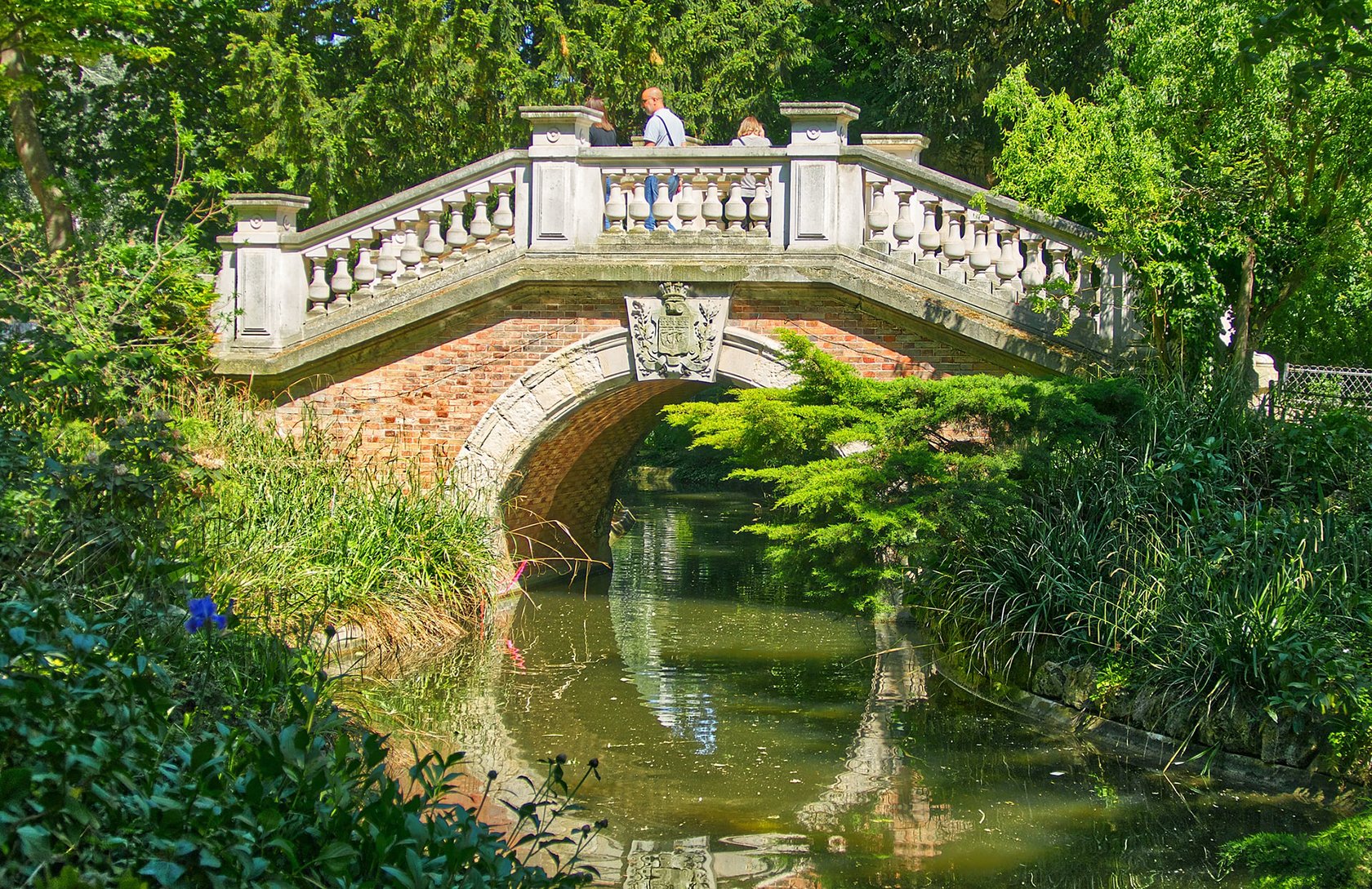
Romantic bridge in Parc Monceau. (Credit)
Parc Monceau
Parc Monceau began in 1769 as a park for Phillippe d’Orléans, Duke of Chartres, a wealthy cousin of King Louis XVI. A lover of gardens, he brought French writer and painter Louis Carrogis Carmontelle to design public gardens that brought together inspiration from around the world to create a whimsical garden. While the the park has changed some over the centuries, you can see see a classical colonnade, an Egyptian pyramid, Renaissance archway, pond and a Doric style temple called the Pavillon de Chartres.
In 1852, the park was bought by the city of Paris and large estates were build surrounding the park by wealthy families of the day. Two of these can be visited nearby: the Musée Cernuschi and the Musée Nissim de Camondo. By 1861, the park had been updated under the eye of Baron Haussmann and became his first new public park in Paris.
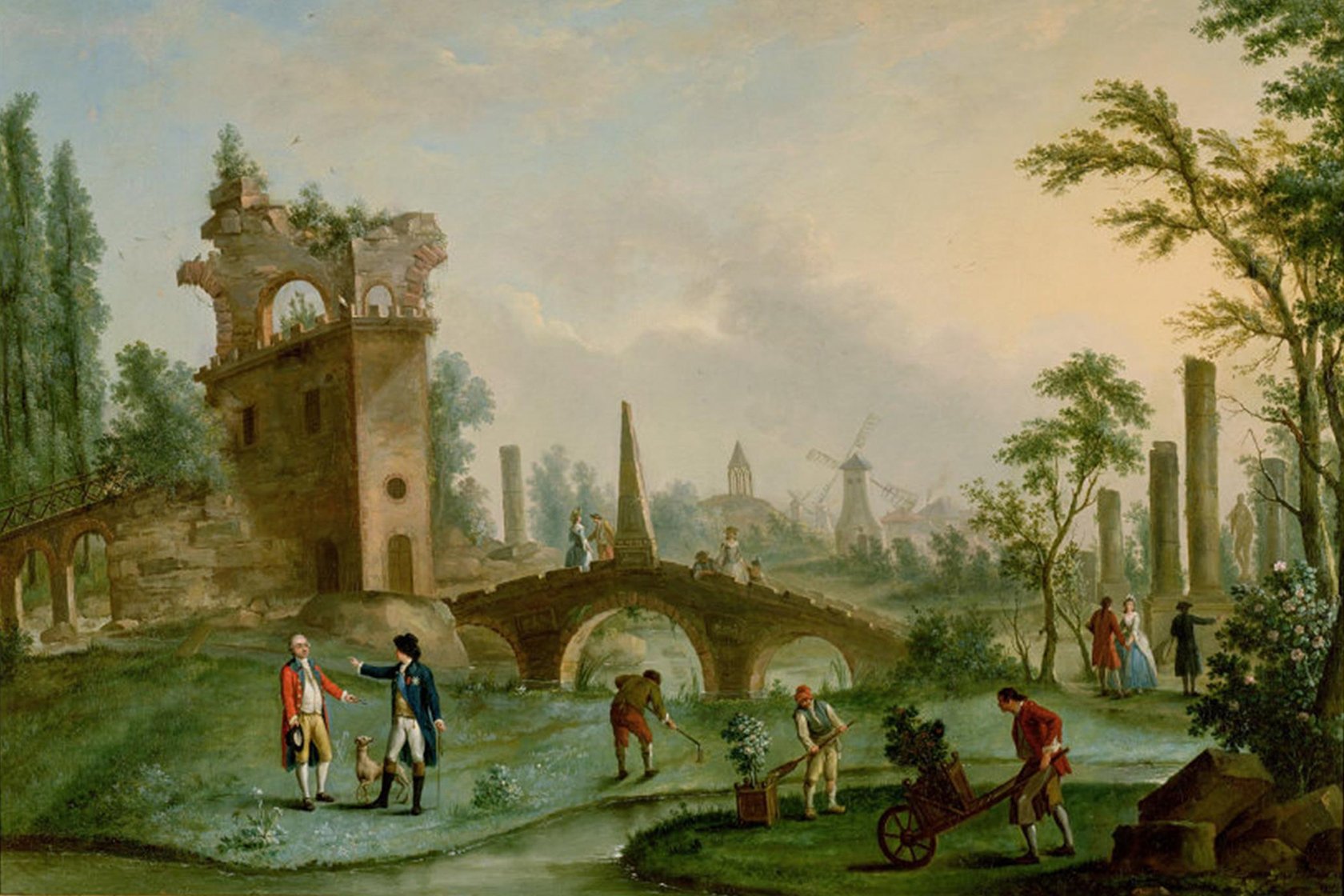
The Duke of Chartres receiving the keys of the Parc Monceau, 1790. (Credit)
Parc Monceau has always had an air of elegance to it, and arriving today you’ll enter through impressive wrought iron gates with elaborate gold embellishments. This was a wealthy neighborhood, popular with bankers and the nouveau riche that settled in the area in the second half of the 19th century. Certainly having Parc Monceau right on your doorstep was a perk! It was admired by artists and writers, and was even a favorite place to stroll for French writer Marcel Proust. We can even imagine him watching—with his incredibly perceptive eye—every detail of the park and its fashionable visitors.
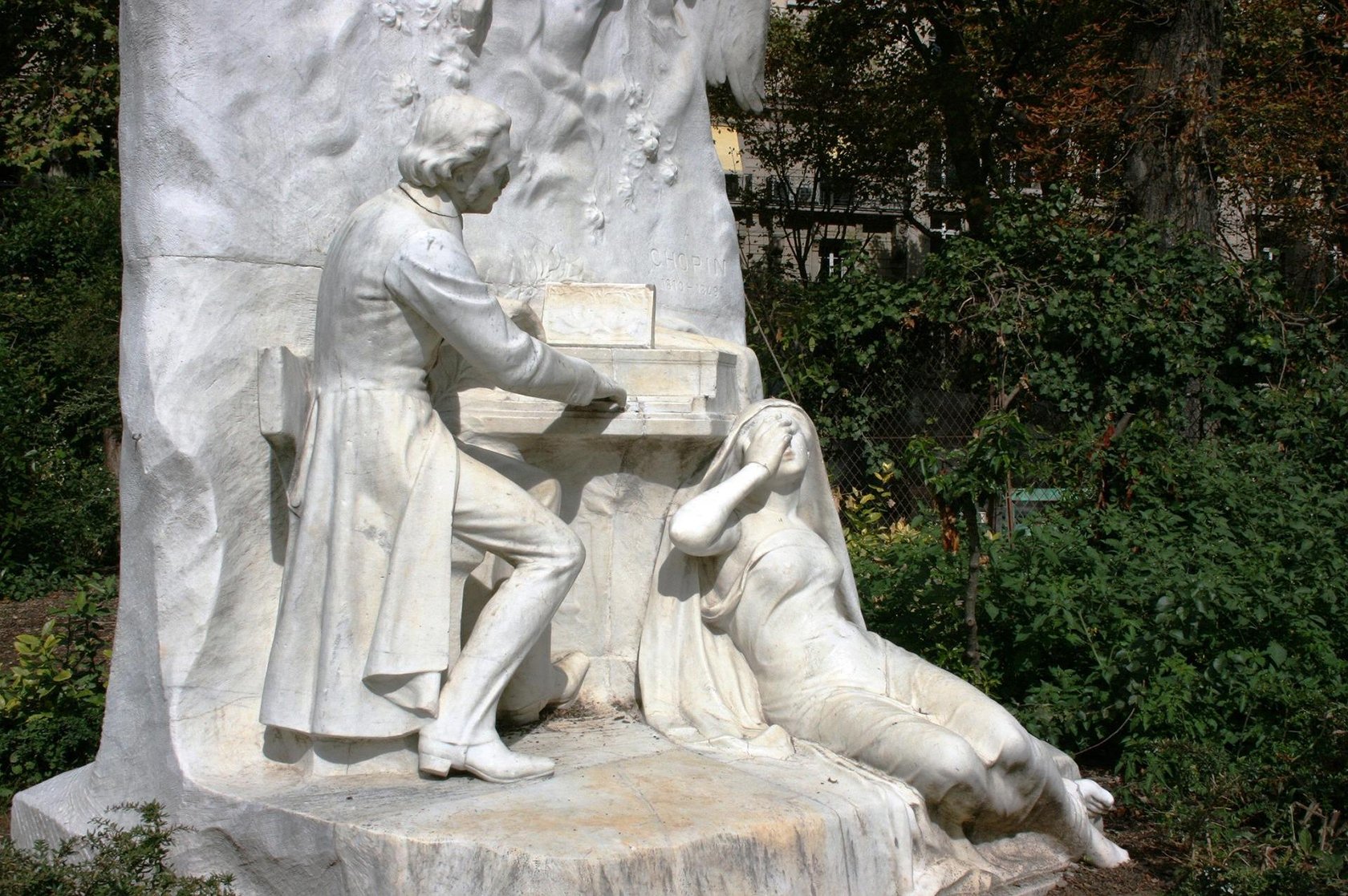
Monument to Chopin by Jacques Froment-Meurice, 1906.
Dotted throughout Parc Monceau are a number of statues, many dedicated to great artists, musicians and writers. Look for the statue of Frédéric Chopin by Jacques Froment-Meurice with the composer’s muse draped dramatically on the side. You’ll also find statues of the celebrated writer Guy de Maupassant by Raoul Verlet (1897) and a monument for poet Alfred de Musset by Antonin Mercié (1906).
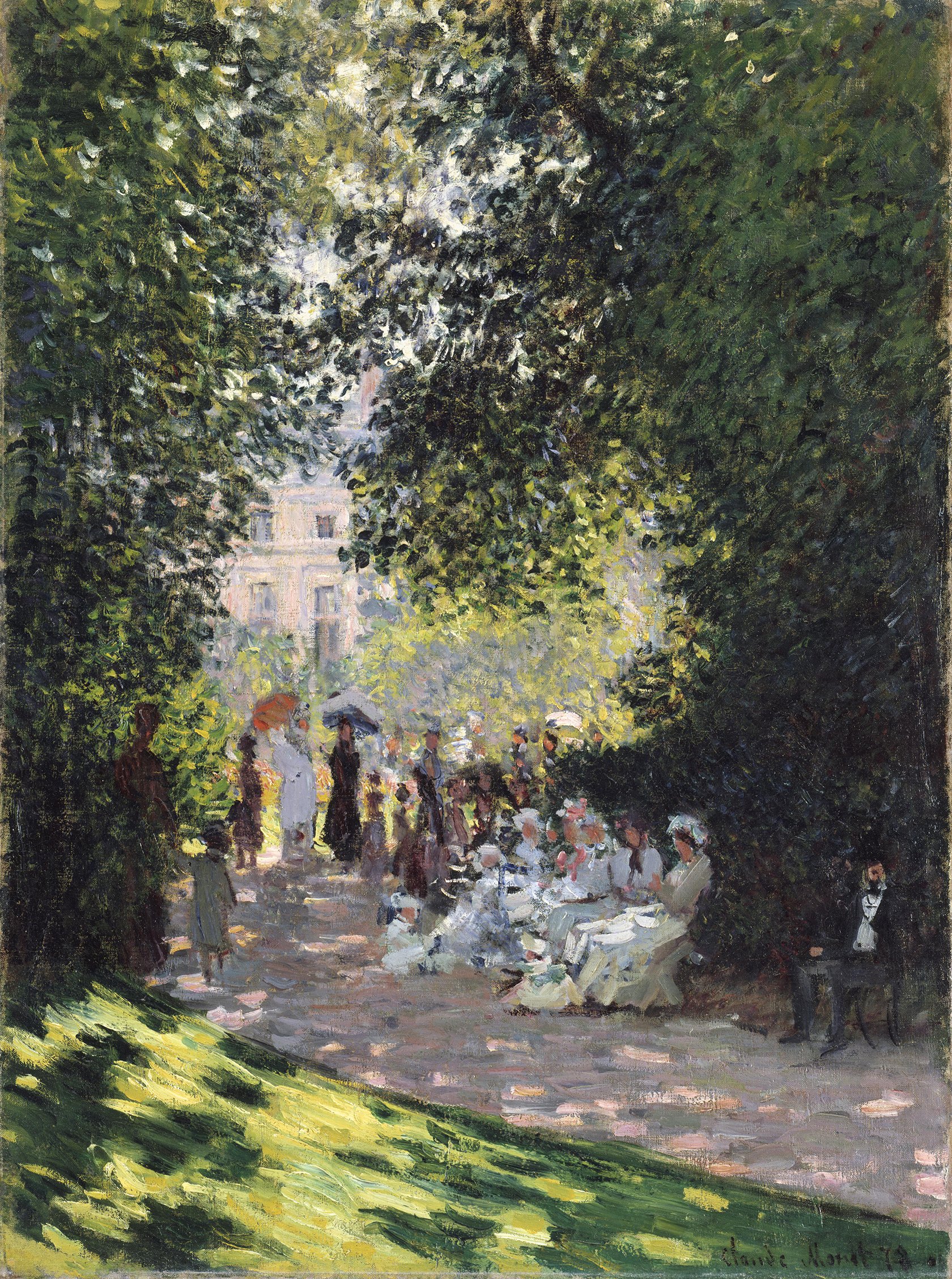
The Parc Monceau, Claude Monet, 1878. (Metropolitan Museum of Art)
The park was also a favorite for painters—something you can still see today—and Claude Monet created a series paintings in the spring of 1876 and again in 1878. While several of the paintings focus on the lush and flowering natural setting, the paintings where you can catch a glimpse of fashionable Parisians in the sun dappled light are particularly charming.
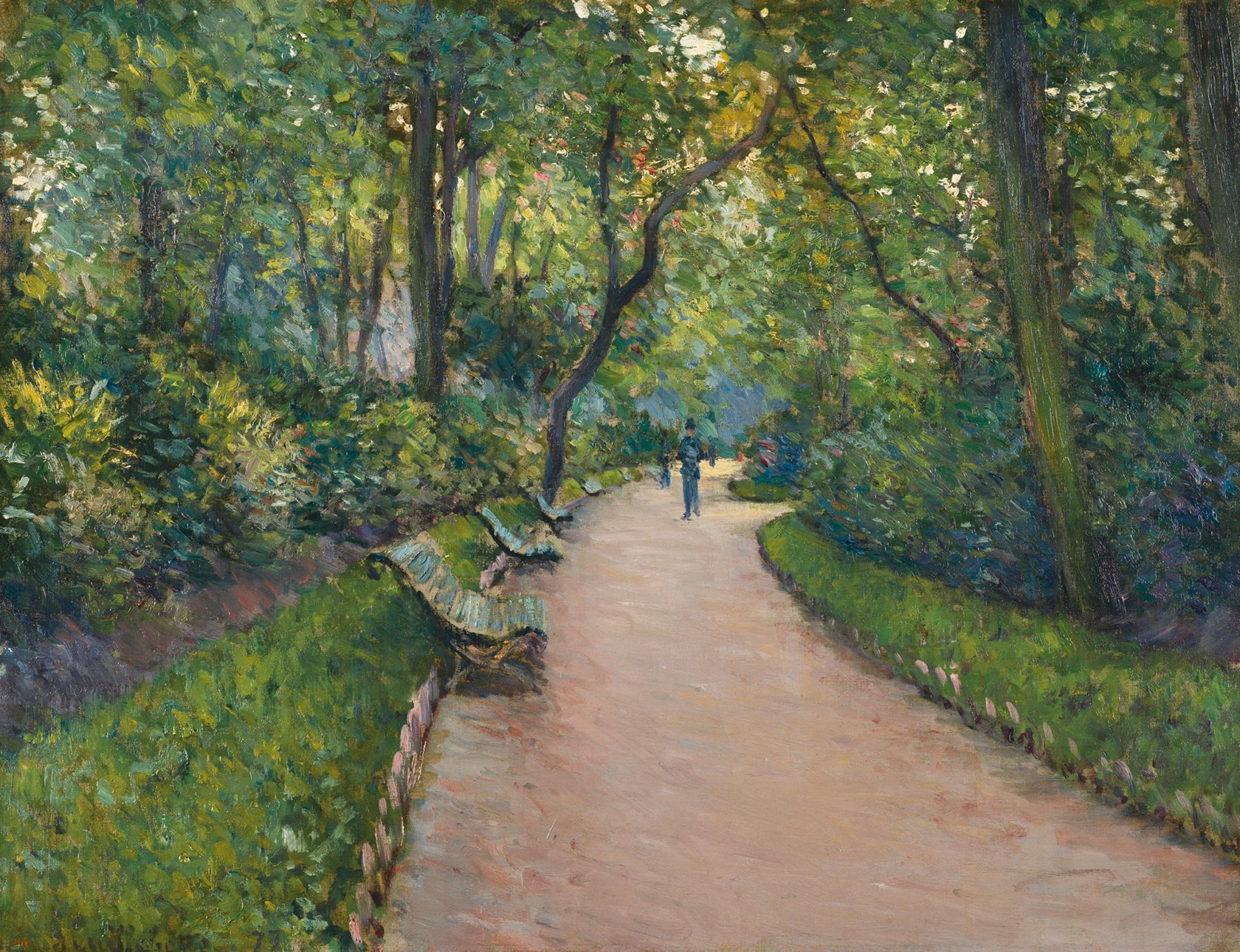
Le Parc Monceau, Gustave Caillebotte, 1877.
French painter Gustave Caillebotte, a member of the Impressionists, lived just a short stroll from Parc Monceau on the rue de Miromesnil. He painted his local park in various seasons of the year in a way that captured the calm beauty that you can still find today. Parc Monceau is full of a great many types of trees, some quite exotic, as well as impressively large and old varieties. Look for the massive sycamore maple with twisted branches that was planted in 1853 and is 98 feet tall – one of the tallest in Paris. You’ll also find an oriental plane tree from 1814 with a trunk circumference of 23 feet!
Today, surrounded by all this beauty, Parc Monceau is popular with families and the merry go round, two playgrounds and pony rides add a vibrant energy to the park.
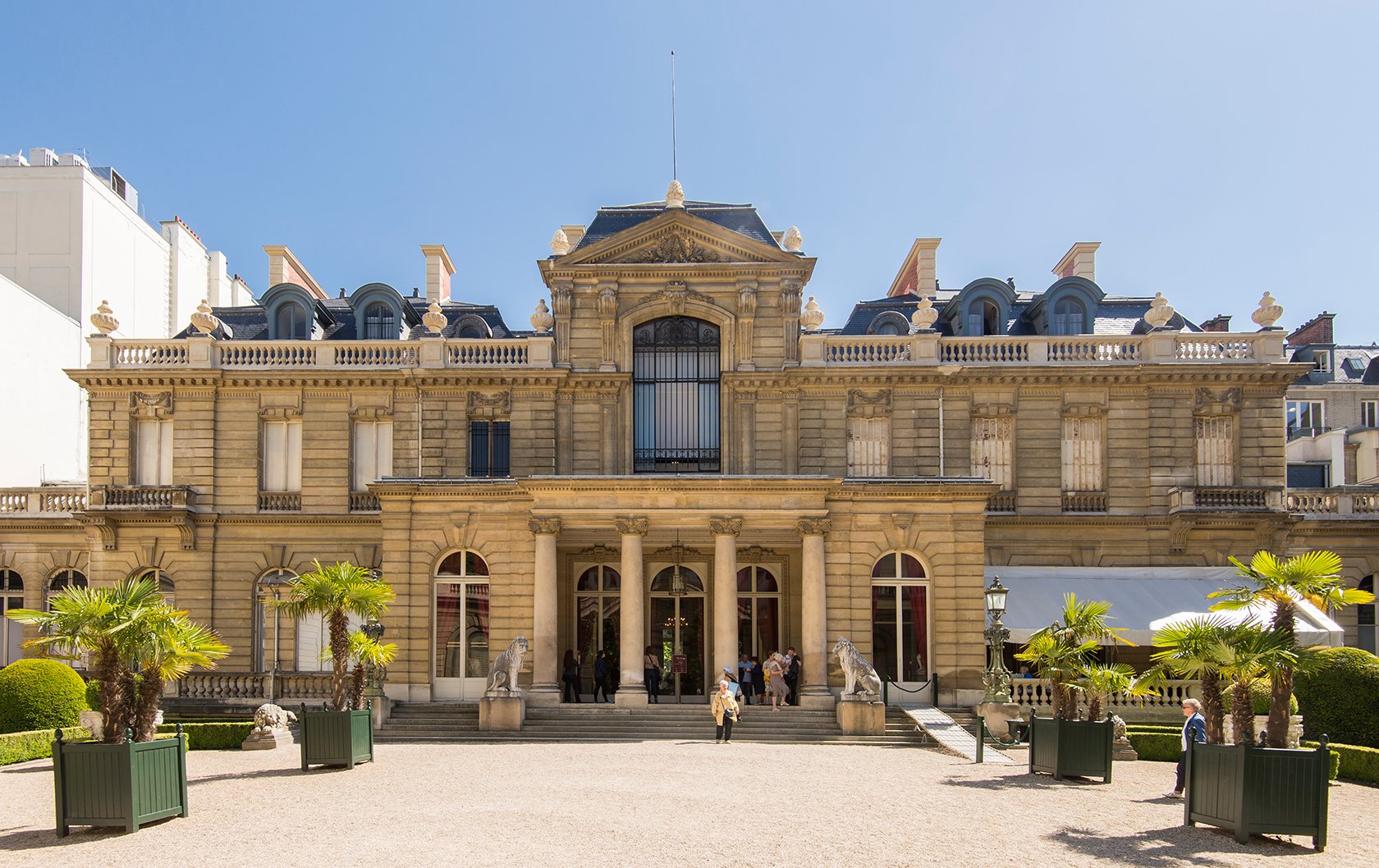
The beautiful entrance to the Musée Jacquemart-André.
Art Museums Near Parc Monceau
While you’re exploring off the beaten path in Paris, take some before before or after a stroll through Parc Monceau to visit one (or more!) of the excellent small museums in the neighborhood. There are some true gems! Just a few minutes south, the Musée Jacquemart-André is set in the ornate 19th-century home of Édouard André and Nélie Jacquemart. Inside you’ll see their incredible collection of 15th-18th century European art in an enchanting setting that makes this one of the loveliest Paris museums.
Just a few minute’s walk north of Parc Monceau, the Musée National Jean-Jacques Henner houses an impressive collection of works by this influential French painter. In addition to the collection, it’s architecturally an intriguing museum set in the former home and studio of artist Guillaume Dubufe (1853-1909). Just when you think you’ve seen all of the museums in Paris, there’s still more to discover!
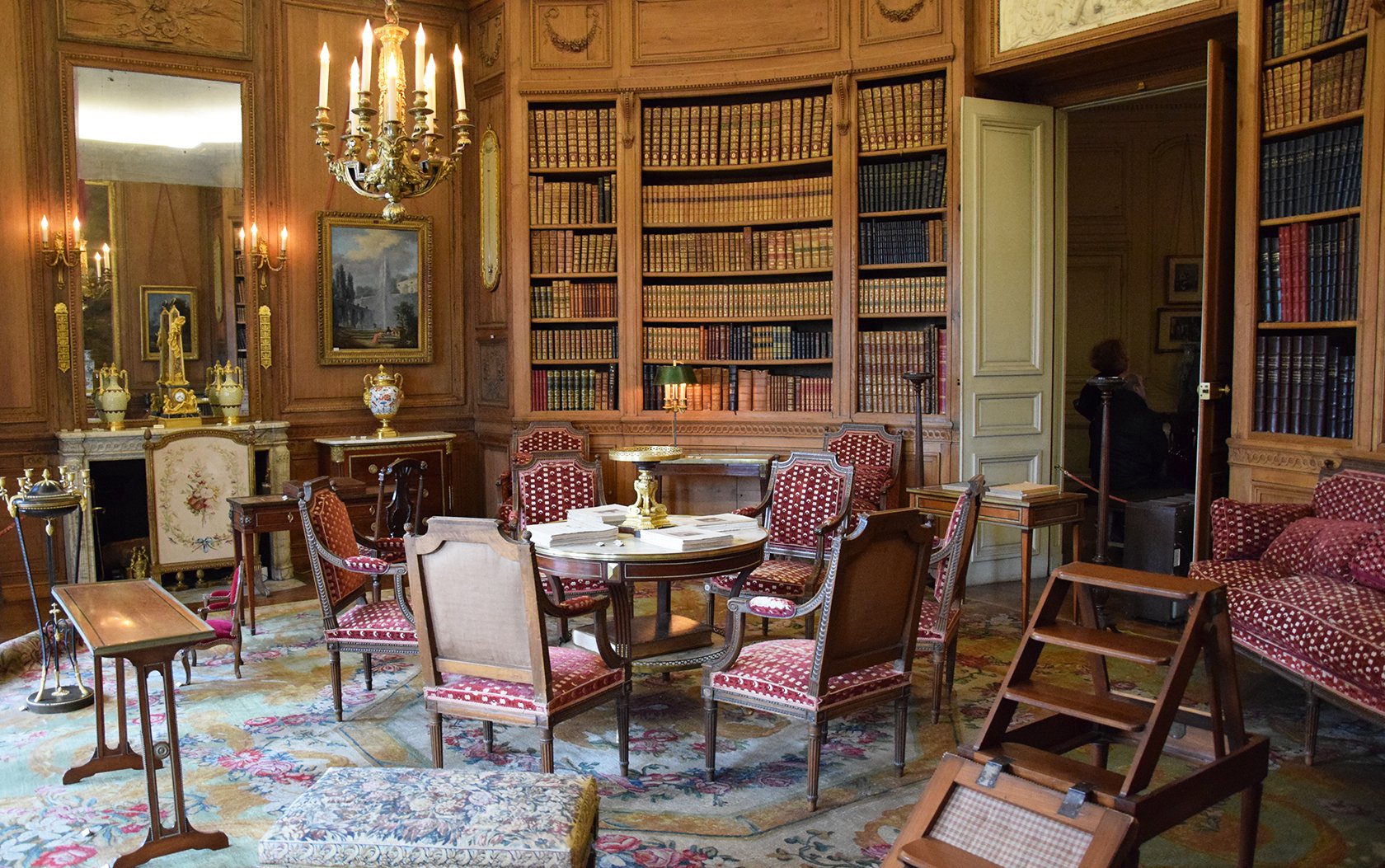
The library at the Musée Nissim de Camondo. (Credit)
For a deeper insight into the Parc Monceau neighborhood, visit the two grand homes of important art collectors who lived nearby. The Musée Nissim de Camondo is an exquisite home perfectly preserved as it was left by Moïse de Camondo (1860-1935). Stroll through the rooms and admire the collection of French 18th-century decorative arts that he created in honor of his son Nissim de Camondo. Nearby, right at the edge of Parc Monceau, the Musée Cernuschi is located in the home of Henri Cernuschi (1821–1896) who amassed one of the finest collections of Asian art in France. These two small museums are a must for art lovers as they tell a story of the neighborhood and capture a moment in time – and a piece of Paris’s history that shouldn’t be forgotten.
You can read more about this captivating neighborhood in Paris, as well as the Musée Nissim de Camondo and Moïse de Camondo, in Edmund de Waal’s memoir The Hare with Amber Eyes: A Hidden Inheritance (2010) and his most recent book Letters to Camondo (2021). They will inspire you to explore this beautiful neighborhood in Paris with new eyes!
